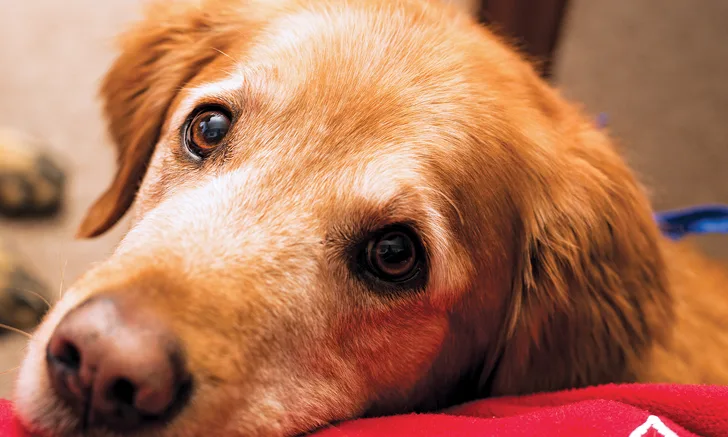Capsule Endoscopy for GI Imaging
Julia Bates, DVM, DACVIM (SAIM), Madison Veterinary Specialists, Madison, Wisconsin

In the Literature
Hardy BT, Gentile-Solomon J, Solomon JA. Multiple gastric erosions diagnosed by means of capsule endoscopy in a dog. J Am Vet Med Assoc. 2016;249(8):926-930.
The Research …
Multiple imaging modalities are used to evaluate patients with GI disease. This case report described the novel use of capsule endoscopy to diagnose gastric erosions in a 6-year-old spayed female golden retriever with a 2-week history of weight loss, abdominal pain, and progressive inappetence. Other than a mild microcytosis and hypochromasia, the minimum database was within normal limits. Abdominal ultrasonography did not reveal any abnormalities.
After fasting, a capsule capable of capturing video images was orally administered. Once passed, the capsule was returned for download. Captured images revealed numerous mucosal erosions and hemorrhages throughout the stomach as well as rare mucosal fissures and dilated lymphatics in the proximal small intestine. Additional diagnostic testing was declined.
The dog was treated with a combination of omeprazole for gastric acid suppression and the cytoprotective medication sucralfate for 6 weeks. It was also transitioned to a novel protein, lamb-based diet. The dog’s clinical signs resolved within 48 hours of starting therapy. The underlying cause of the gastric erosions was never identified. Capsule endoscopy repeated 6 weeks later revealed subjective improvement in the lesions; no new lesions were identified. Treatment with omeprazole and sucralfate was continued for an additional 2 weeks. The dog was noted to be clinically normal during follow-up 9 months after the initial visit.
This article showed how capsule endoscopy may be useful as a noninvasive alternative to endoscopy. Potential benefits include that it can be performed on an outpatient basis, that it allows image capture of the entire GI tract, that it can be easily repeated, and that it does not require general anesthesia. It also may be less expensive than endoscopy, and the potential for complications is low.
Potential limitations include that the capsule may be too big for small-breed dogs and cats to pass, that ingesta may obscure adequate image collection, that image interpretation may be delayed as capsules need to be sent out, and that GI biopsy may still be required in many patients.
… The Takeaways
Key pearls to put into practice:
Evaluation of GI disease often requires multiple imaging modalities; no single modality is both highly sensitive and highly specific in all cases.
As additional capsule endoscopy data are collected, capsule endoscopy will likely become an easy, noninvasive way to evaluate GI motility and GI transit times and to gather information about mucosal lesions.
Capsule endoscopy will not replace the need for GI biopsy.